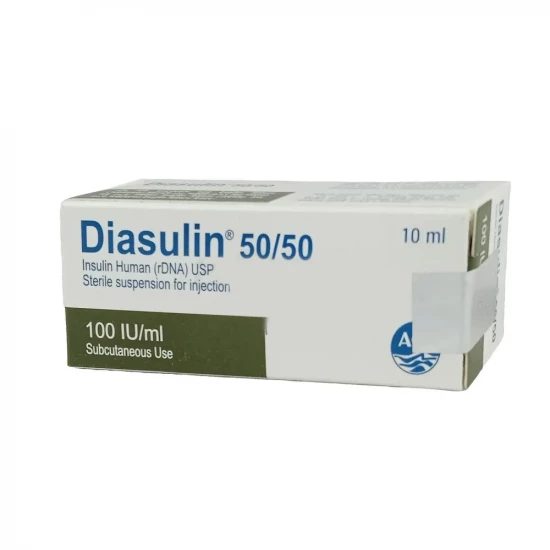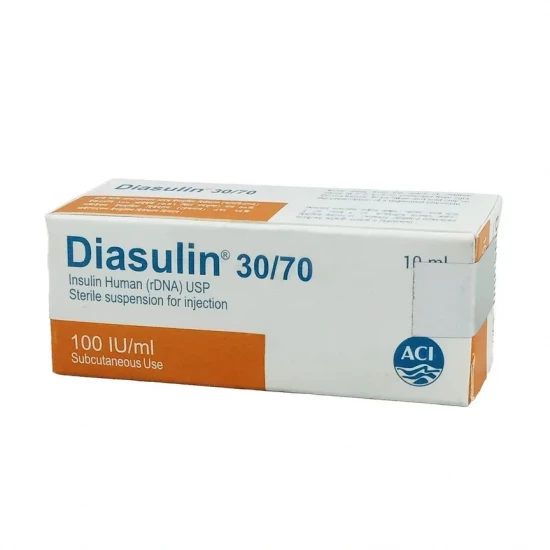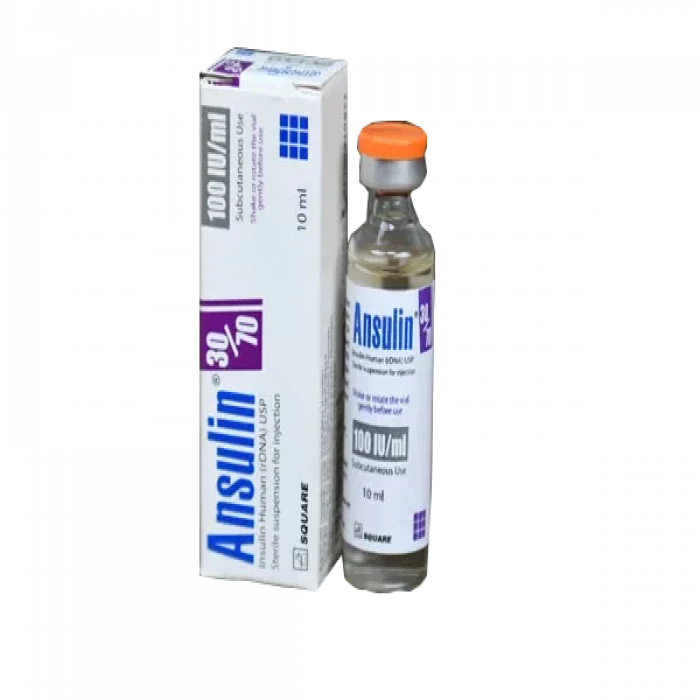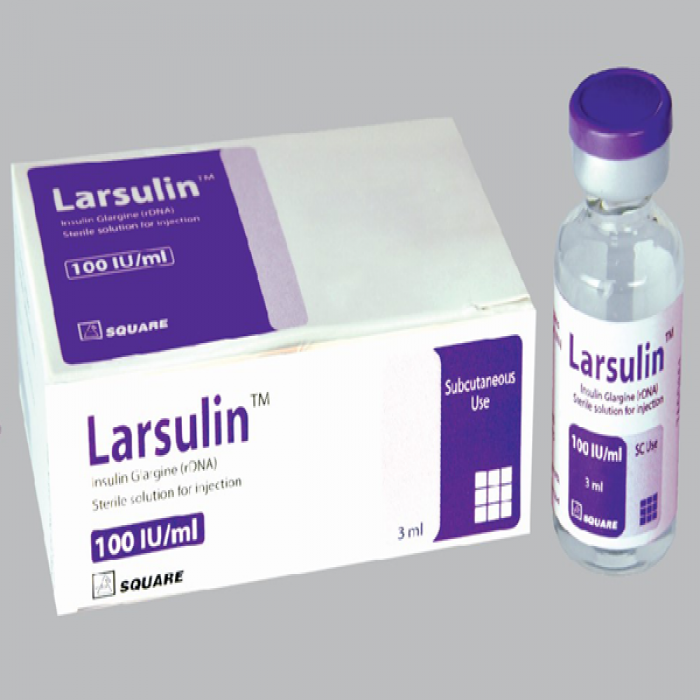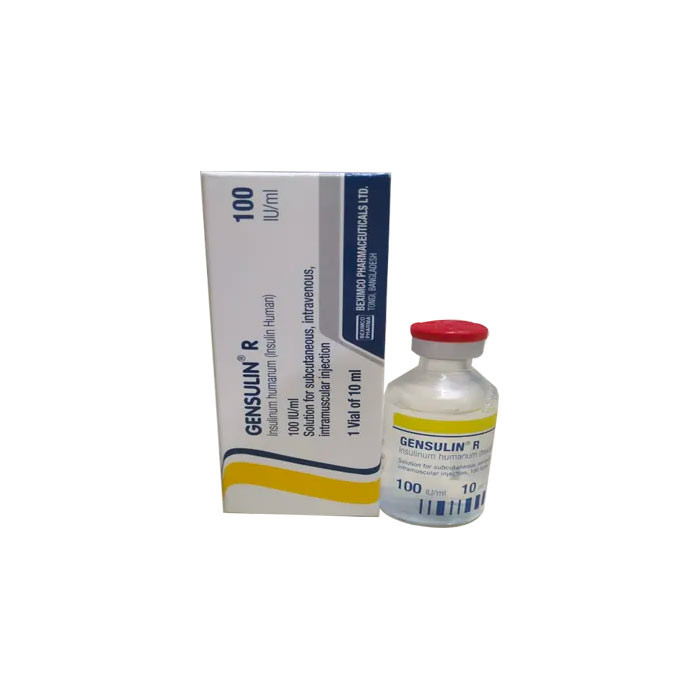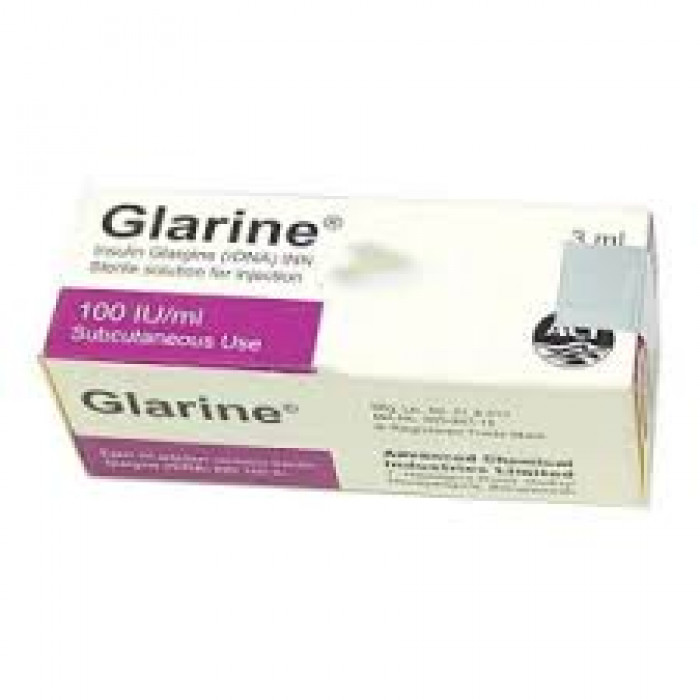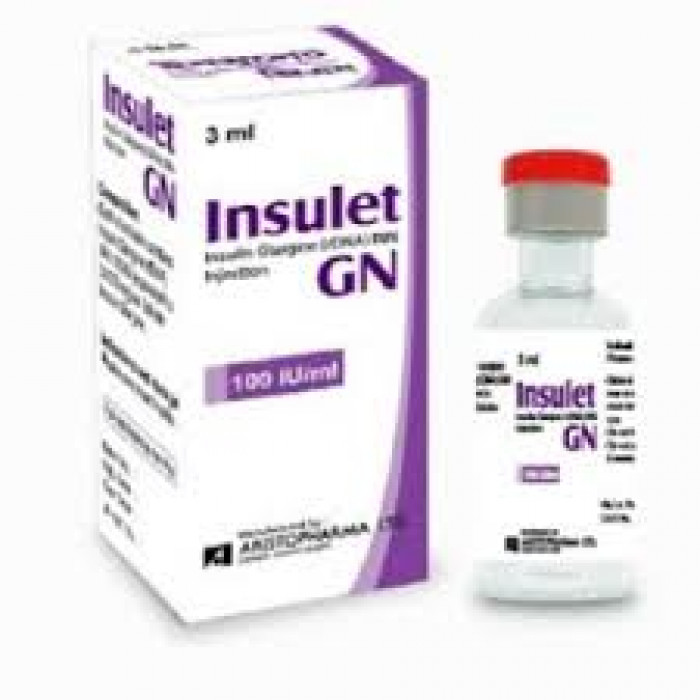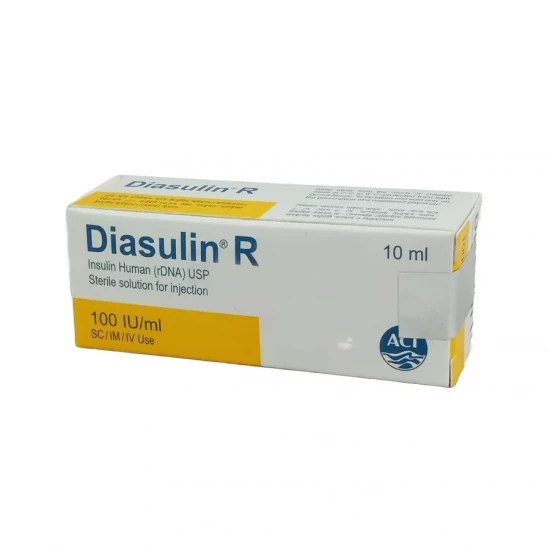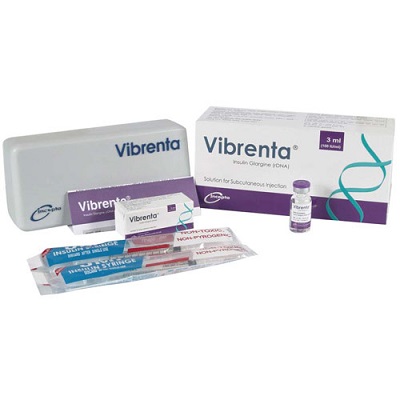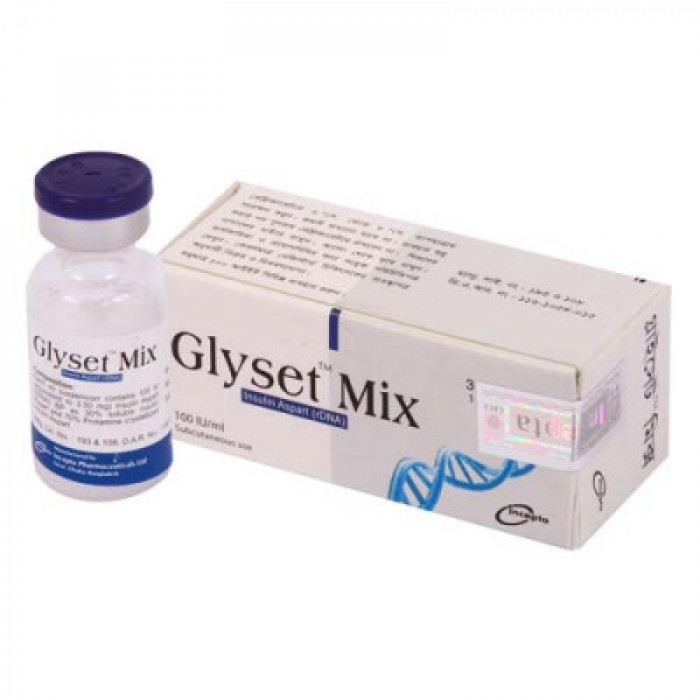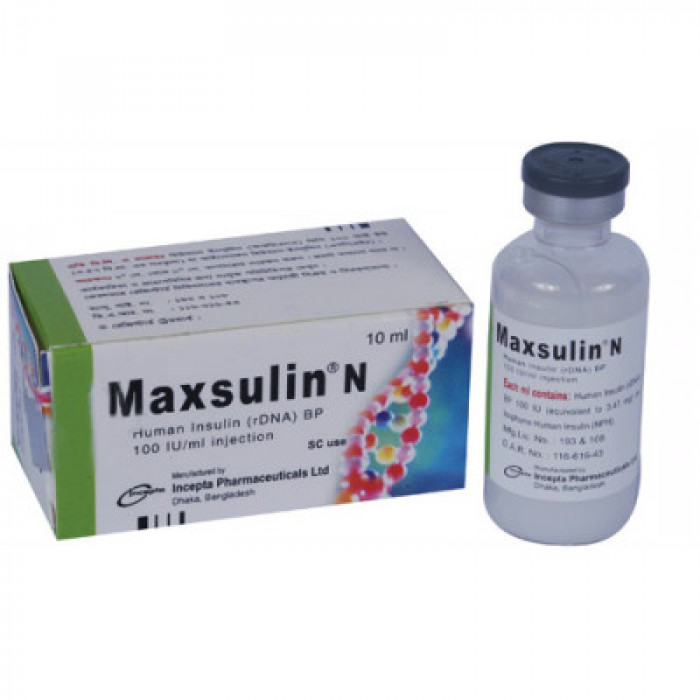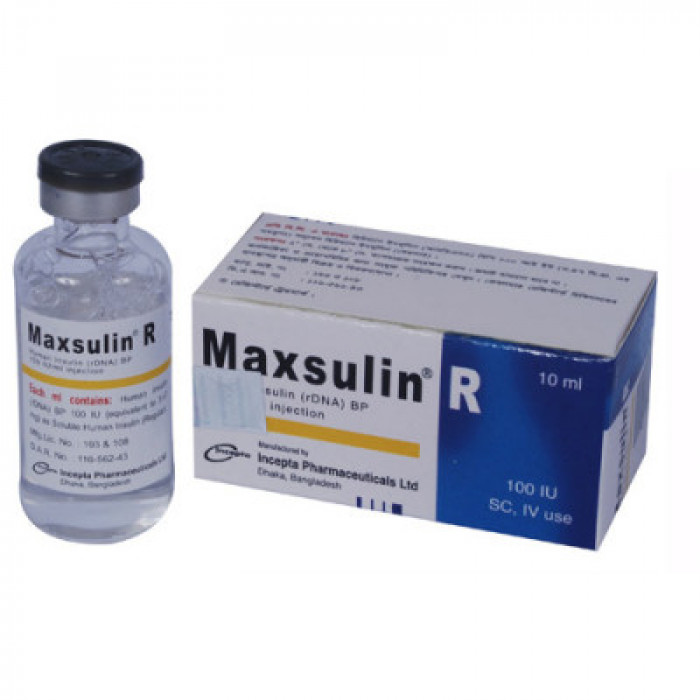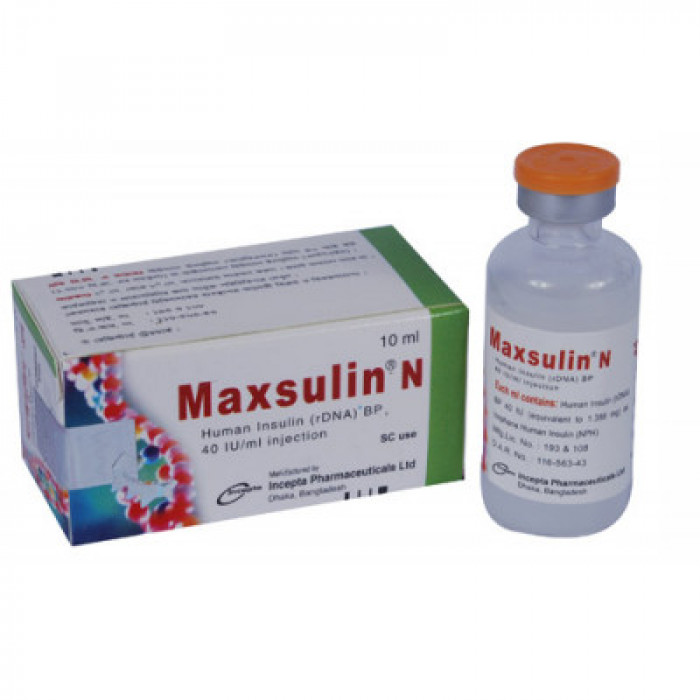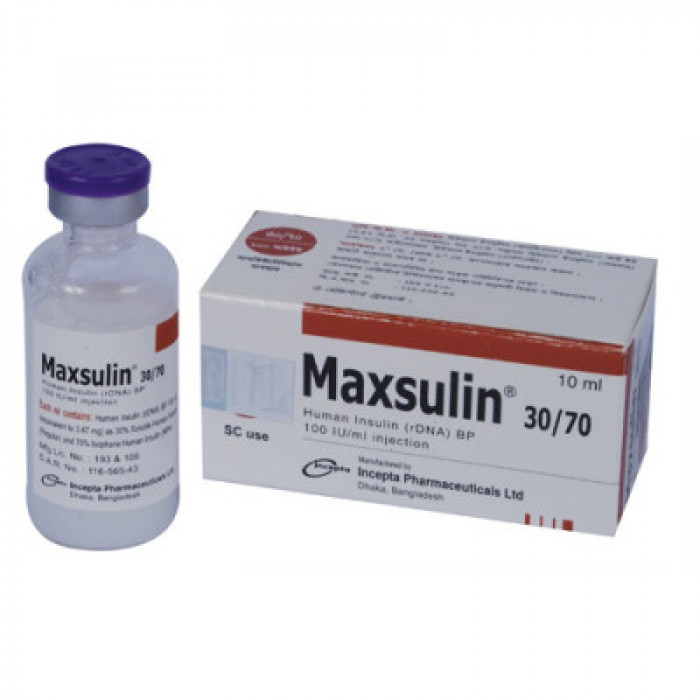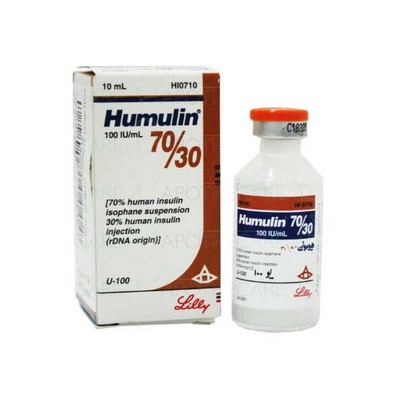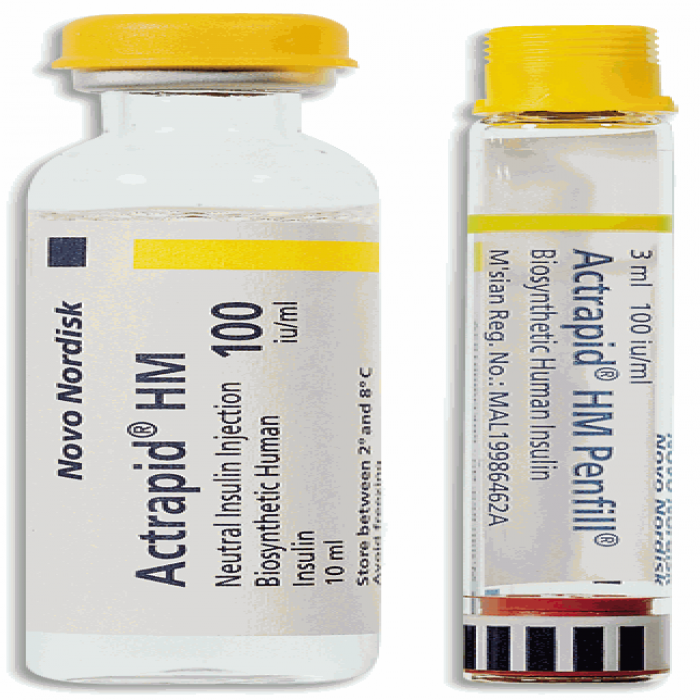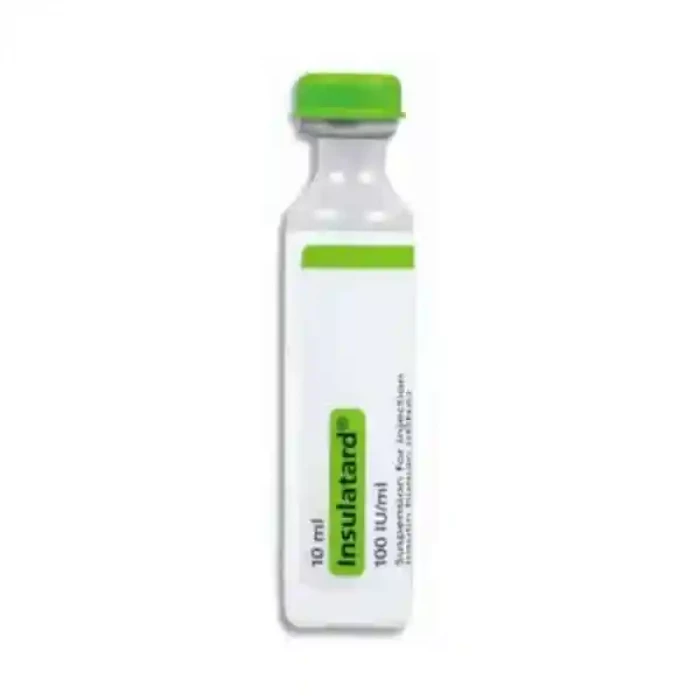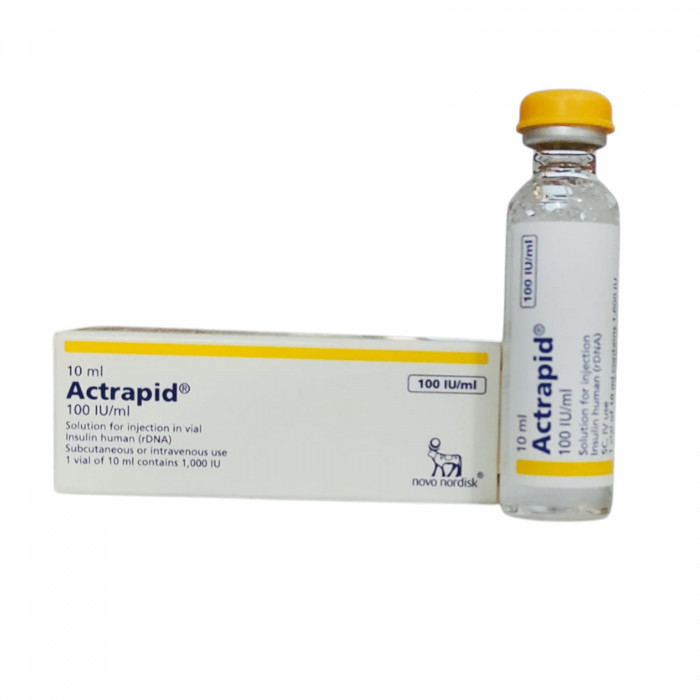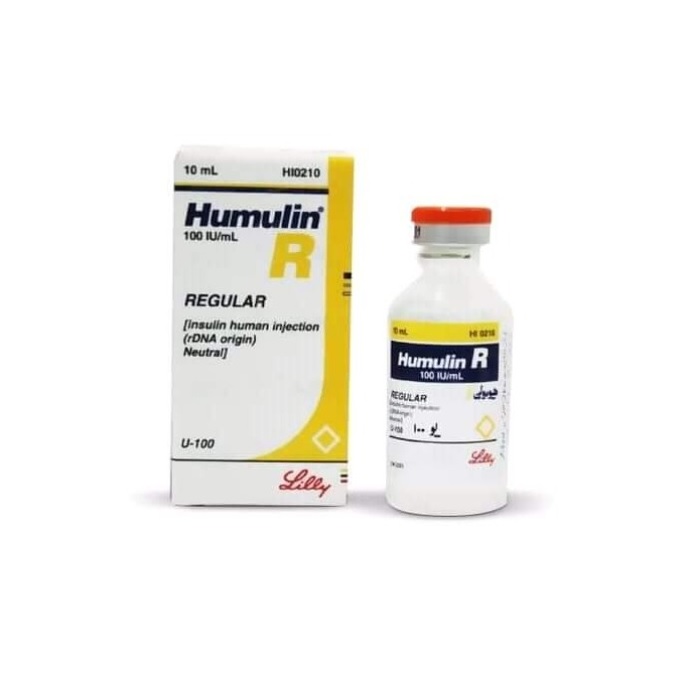
✔ 100% Authentic Product
👁️ Currently Viewing 3023
Injection,
Insulin Human Fast-Acting 100 IU/ml, International Agencies (Bd.) Limited Mfg. by: Eli Lilly and Company
Discount
Price: ৳ 851
MRP:
৳
877
3%
Off
✅ Description:
Indication
Diabetic ketoacidosis, Diabetes mellitus
Administration
Administer within 15 minutes before a meal or immediately after a meal. Administer subcutaneously in the upper arm, thigh or abdominal wall. A subcutaneous injection into the abdominal wall results in a faster absorption than from other injection sites.
Adult Dose
Subcutaneous Type 1 Diabetes Mellitus Initial: 0.2-0.4 units/kg/day SC divided q8hr or more frequently Maintenance: 0.5-1 unit/kg/day SC divided q8hr or more frequently; in insulin-resistant patients (eg, due to obesity), substantially higher daily insulin may be required Approximately 50-75% of the total daily insulin requirements are given as intermediate- or long-acting insulin administered in 1-2 injections; rapid- or short-acting insulin should be used before or at mealtimes to satisfy the remainder balance of the total daily insulin requirements Type 2 Diabetes Mellitus Type 2 diabetes inadequately controlled by diet, exercise, or oral medication: Initial: 0.2-0.4 units/kg/day SC divided q8hr-q12hr Intramuscular Diabetic ketoacidosis Adult: As soluble insulin, initial loading dose of 20 units, followed by 6 units/hr until blood glucose drops to 10 mmol/l, when the dose is given 2 hrly. Intravenous Diabetic ketoacidosis Adult: As soluble insulin, given in concentration of 1 unit/ml using an infusion pump: Initially infuse at a rate of 6 units/hr, double or quadruple the rate if blood glucose concentration do not decrease by about 5 mmol/l/hr. If blood glucose concentrations have decreased to 10 mmol/l, reduce the infusion rate to 3 units/hr and continue with 5% glucose to prevent hypoglycaemia, until the patient can eat orally. Do not stop the insulin infusion before SC insulin is started. Ensure adequate fluid replacement and include potassium chloride in the infusion to prevent insulin-induced hypokalaemia. Hyperkalemia 5-10 units IV insulin in 50 mL D50W (25 g) infused over 15-30 min When combined with NPH/Intermediate acting insulin: Morning Give two thirds of daily insulin SC Ratio of regular insulin to NPH insulin 1:2 Evening Give one third of daily insulin SC Ratio of regular insulin to NPH insulin 1:1 Dosing Considerations Dosage of human insulin, must be based on the results of blood and urine glucose tests and must be carefully individualized to optimal effect Dose adjustments should be based on regular blood glucose testing Adjust to achieve appropriate glucose control Hepatic impairment: Dosage reduction may be needed.
Child Dose
Subcutaneous Type 1 Diabetes Mellitus Initial: 0.2-0.4 unit/kg/day SC divided q8hr or more frequently Maintenance: 0.5-1 unit/kg/day SC divided q8hr or more frequently; in insulin-resistant patients (eg, due to obesity), substantially higher daily insulin may be required Adolescents: May require up to 1.5 mg/kg/day during puberty The average total daily insulin requirement for prepubertal children varies from 0.7-1 unit/kg/day but may be much lower
Renal Dose
Renal impairment: Dose adjustments may be needed.
Contraindication
Hypoglycaemia.Hypersensitivity to any of the components.
Mode of Action
Insulin lowers blood glucose levels. It regulates carbohydrate, protein and fat metabolism by inhibiting hepatic glucose production and lipolysis, and enhancing peripheral glucose disposal. The various insulin formulations are classified according to their durations of action after SC Inj. They are divided into short-, intermediate-, or long-acting insulin. Soluble insulin (also known as 'neutral insulin' or 'regular insulin') is a short-acting preparation. To extend the duration of action of insulin, preparations are formulated as suspensions in 2 methods. The 1st method involves complexing insulin with a protein so that it is slowly released, e.g. protamine zinc insulin (contains an excess of protamine) and isophane insulin (or NPH insulin which contains equal amounts of protamine and insulin). An alternative method is particle size modification e.g. insulin zinc suspensions. While all the formulations can be admin by SC inj, most by IM inj, only soluble insulin can be admin by IV. Compared to SC inj, IM admin usually has a faster onset of action, with a shorter duration of action.
Precaution
Pregnancy (insulin requirements tend to fall during the 1st trimester, increase during the 2nd and 3rd) and lactation. Caution with decreased insulin requirements: Diarrhea, nausea/vomiting, malabsorption, hypothyroidism, renal impairment, hepatic impairment Hypokalemia may occur Use with caution in renal and hepatic impairment (dosage requirements may be reduced) Caution with increased insulin requirements: Fever, hyperthyroidism, trauma, infection, surgery Lactation: Safe to use while breastfeeding
Side Effect
Allergic reactions. Injection site reaction, lipodystrophy, pruritus, rash, lipoatrophy, hypokalaemia, blurred vision. Hypoglycaemia, insulin resistance. Headache,Influenza-like symptoms,Dyspepsia,Diarrhea,Back pain,Pharyngitis,
Interaction
Possible absence of hypoglycaemic warning symptoms with beta-blockers. Decreased hypoglycaemic effect with corticosteroids, danazol, diazoxide, diuretics, glucagon, isoniazid, phenothiazine derivatives, somatropin, sympathomimetic agents, thyroid hormones, oestrogens, progestins (e.g. in oral contraceptives), protease inhibitors and atypical antipsychotic (e.g. olanzapine and clozapine). Increased hypoglycaemic effect with oral antidiabetic agents, ACE inhibitors, disopyramide, fibrates, fluoxetine, MAOIs, pentoxifylline, propoxyphene, salicylates and sulfonamide antibiotics. Decreased insulin resistance with octreotide and lanreotide. Increased risk of wt gain and peripheral oedema with pioglitazone, rosiglitazone. Decreased effect of sermorelin.
⚠️Disclaimer:
At ePharma, we’re committed to providing accurate and accessible health information. However, all content is intended for informational purposes only and should not replace medical advice from a qualified physician. Please consult your healthcare provider for personalized guidance. We aim to support, not substitute, the doctor-patient relationship.




